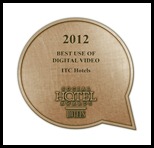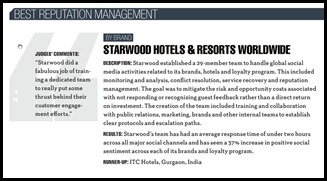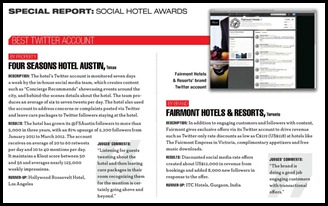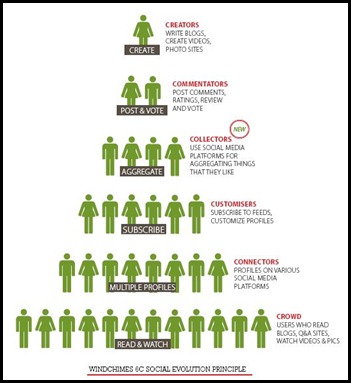 Enough has been raved about social media in the highest chambers of corporations in the past few years. While some of them are still in their nascent stage and undergoing an induction in terms of understanding of how this platform has to be utilised, others have steered ahead to employ meticulous strategies to augment their organisational objective.
Enough has been raved about social media in the highest chambers of corporations in the past few years. While some of them are still in their nascent stage and undergoing an induction in terms of understanding of how this platform has to be utilised, others have steered ahead to employ meticulous strategies to augment their organisational objective.
The use of social media by the corporate world has proliferated to great extent in terms of marketing efforts. Having said that, it will indeed be really myopic to limit the scope of social media to just that. With the ultimate objective of growing business and sustaining growth at the back of any organisation’s mind, let’s look at some of the ways in which firms could make the most of social media:
Think beyond core marketing:
Social media is seen by most corporations as a marketing initiative and less of a brand execution strategy. While its role in marketing is critical and undeniable, corporations need to focus more on the delivery of service. Customer service, in this regard, is increasingly gaining more prominence as today’s fans (customers) on the brand page of a platform are expecting prompt assistance. This can only be realised when those in the head of the organisations consider employing social media more as an extension of brand identity rather than a mere marketing platform.
Put your eggs in select baskets:
Although keeping tabs on the customer pulse is important, having a presence on multiple social networking platforms to lap up all-one-can-get is not quite the smartest of moves. Rather, investing more time, money and energy in select channels could prove to be more worthy and effective.
What this means for the company is that it enables them to use their resources in a more focused manner besides letting them exercise more control over the messaging and addressing customer concerns in the process of building on engagement. For instance, most companies would have a Facebook brand page as a primary social network, followed by twitter for real time connection. YouTube provides for a video back-up. Add to this a corporate web log and get the ball rolling. This works just fine for some of the established corporations. For start-ups and small-medium scale enterprises it might not always be a feasible model to pursue. It becomes more so important for such firms to have a limited presence as it offers scope to amplify the roots and processes within a select set of channels.
Specific and not generic:
In order to grow business it is important to identify the areas within the existing social network of platforms that have something collective yet new to offer. Relying on users to share and spread the word about a firm’s product is a norm for most established firms. Due to their popularity in the industry and a known history of customer relationship, it is possible to reach out to a wider base. But, how about the not so established corporations? For them it is advisable to redirect their messaging to parts of conversations that hold that are more specific. Say, have a website or a link to direct customers/fans/networked users to a specific post, update, tab, tweet etc. would yield a much higher impact. This when substantiated with offers and incentives will lead to a higher response rate.
Partnerships beyond the community:
While we all understand that engagement is crucial to most organisation’s well-being and an essential part of the marketing process, it only does constitute an organic growth. It shouldn’t come as a surprise that for many small or small-medium scale enterprises, even in social media, a lot of focus is on inorganic growth and why shouldn’t it be?
Corporations of diverse sizes have to set aside their resources and allot them to new business development rather than only focusing on community management on certain specific social networking sites. It is wise to encourage and build upon partnerships with other entities. With an array of tools and social media platforms available today, to forge a relationship with people and organisations of credible reputation is not that hard either. For starters, small firms could tie up and contribute to bigger firms and gain visibility among the larger audience/customer base. For instance, Linkedin, one of the foremost social networking platform for professionals can give access to other organisations and grants scope to associate and keep an eye on what others, both competition an market leaders are doing in the social space. With time, this will only add to an increased visibility and chances of acquiring a possibly larger customer base.
Mix mechanism for hiring:
That a whole lot of companies are using social media for hiring and recruitment to a certain extent is perhaps not an alien fact. But, due to the delicate nature of the processes involved (screening) it becomes highly volatile for the human resources to tread this path carefully.
Firms, who use social media to hire, need to have a mixed mechanism in place. The initial process of scanning public profiles of prospective candidates needs to be followed up with manual reference checks. Relying solely on social in this area could save a firm from facing legal charges based on discrimination. With sites such as Linkedin and Twitter, the ideal way to create a prospective talent pool is to first get them to follow the company. Once, they show interest it’s easy to target them with messaging that are job centric. In fact this is an ideal opportunity to showcase an organisation as an employer of choice by sharing specific internal news and events.
In your knowledge, how do you think corporations are using social media in their various aspects? Are you aware of any new facet that could have gone unnoticed? Let us know. It is only through mutual sharing that we collectively grow.
 Current Position and Organisation:
Current Position and Organisation:







